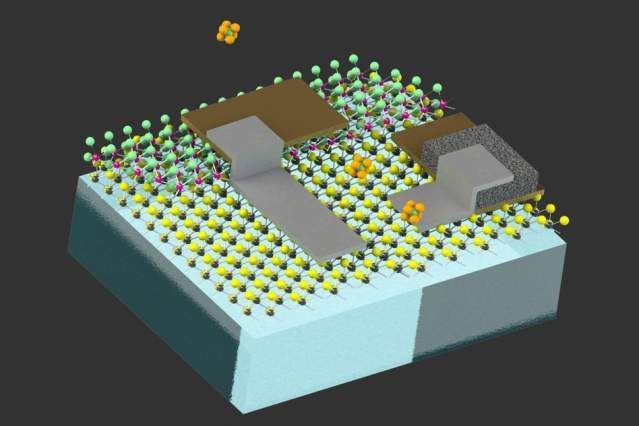Researchers from the Massachusetts Institute of Technology (MIT) have developed what they claim to be the smallest robot that could flow through pipelines to detect problems.

Image: Illustration of the design of the tiny devices which can float freely in liquid or air. Photo: courtesy of the researchers/Massachusetts Institute of Technology.
The new robots, which can sense their environment, store data, and even carry out computational tasks, comprise tiny electronic circuits made of 2D materials, piggybacking on minuscule particles called colloids.
According to the researchers, the colloids are insoluble particles or molecules and have ability to stay suspended indefinitely in a liquid or even in air. The colloids measure around one-billionth to one-millionth of a meter.
The researchers expect to lay groundwork for devices by integrating the tiny objects to complex circuitry, and use it to diagnose human body, detect problems in oil and gas pipelines, or measure compounds inside a chemical processor or refinery.
MIT Chemical Engineering Carbon C. Dubbs Professor Michael Strano said: “We wanted to figure out methods to graft complete, intact electronic circuits onto colloidal particles.
“Colloids can access environments and travel in ways that other materials can’t.”
The MIT’s new self-powered tiny robots uses photodiode to power their computation and memory circuits.
Additionally, the robot is capable of sensing information about their environment, store data in their memory, and read out the data upon completion of their mission.
MIT said in a statement: “The initial proof-of-concept devices didn’t have a timing circuit that would indicate the location of particular data readings, but adding that is part of ongoing work.”
MIT postdoc Volodymyr Koman said that the new device uses 2D electronics as they are strong enough, robust enough to maintain their functionality even on unconventional substrates such as the colloids.
The researchers are currently working to add communications capabilities to allow the particles to deliver their data autonomously eliminating the need for physical contact.
The project is backed by the US Office of Naval Research and the Swiss National Science Foundation.
